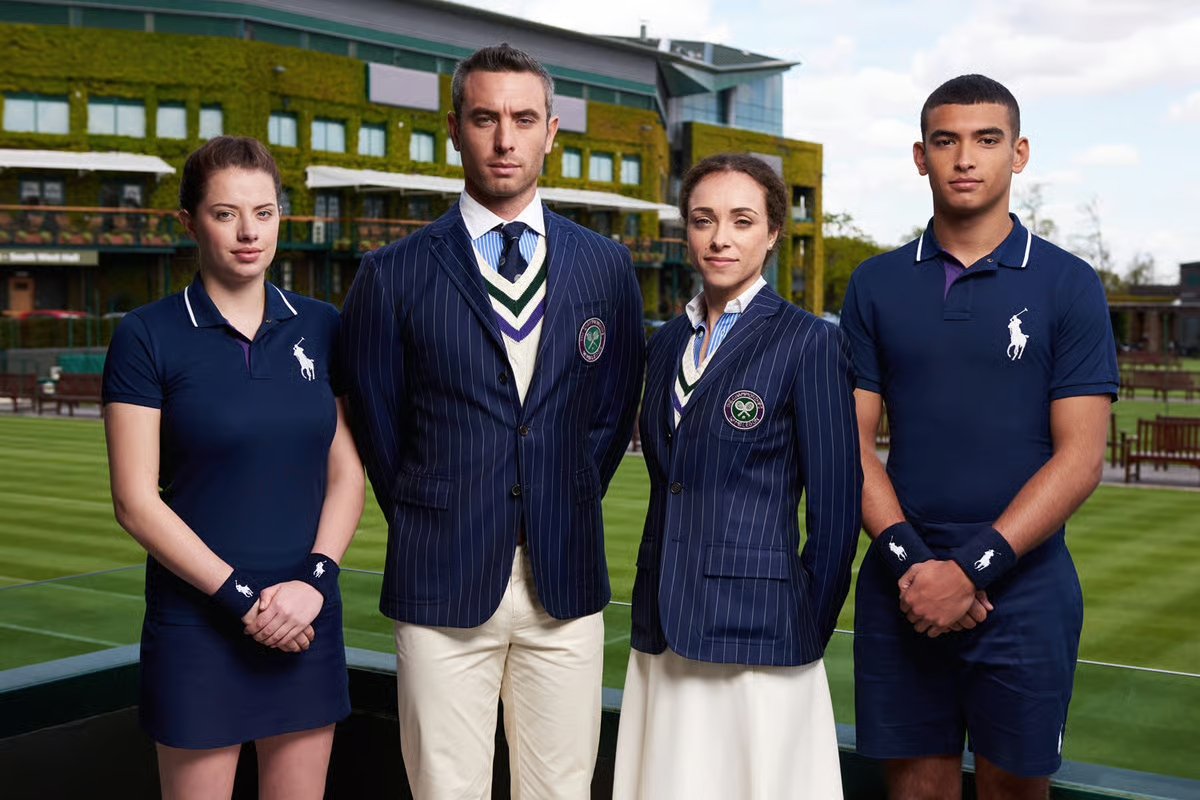Why Wimbledon is a Masterclass in Luxury Brand Consistency
Wimbledon—the oldest and most prestigious tennis tournament in the world—exemplifies luxury brand consistency. From its iconic all-white dress code to its curated sponsorships and heritage-driven storytelling, Wimbledon maintains a cohesive global presence that resonates with fans, players, and sponsors alike. For business owners and marketers in fashion, jewelry, and accessories, Wimbledon’s approach offers invaluable lessons in upholding brand identity across decades and demographics.
This article dissects how Wimbledon leverages tradition, color, exclusivity, and aligned partnerships to craft a uniform, aspirational experience, drawing on brand strategy, art direction, and legacy marketing principles.
1. Brand Identity Through Color, Tradition, and Exclusivity
Wimbledon’s most visible brand cue is its stringent all-white player dress code, enforced since 1877. This rule is more than aesthetics—it signals purity, tradition, and luxury (Wimbledon Official Rules).
Visual Uniformity: By mandating all-white attire for players and strict attire guidelines for officials, Wimbledon ensures a visual consistency that differentiates it from other Grand Slams. The green-and-purple color palette of the courts, signage, and collateral further amplifies instant recognition.
Tradition as Differentiator: Rituals—strawberries and cream, the Royal Box, and the queue—reinforce a sense of heritage. Fans queue for hours to experience Wimbledon live, underscoring an exclusive, almost pilgrimage-like quality (BBC Sport).
Limited Access: Only 42,000 spectators per day are admitted through the queue, badges, or hospitality packages. This scarcity underlines perceived value—tickets become status symbols for enthusiasts and corporate clients alike.
Key Takeaway for Brands: Curate distinctive visual and experiential codes—whether a signature color, uniform, or ritual—that become synonymous with your brand’s heritage and luxury positioning.
2. Sponsorship Alignment and Brand Equity
Wimbledon’s sponsorship strategy is meticulously curated to align with its luxury status. Unlike mass-market events, Wimbledon partners with brands that reinforce its image of prestige, quality, and British heritage.
Ralph Lauren & Umpire Uniforms: Since 2006, Ralph Lauren has outfitted players, umpires, and officials in bespoke, all-white lines designed specifically for Wimbledon. This partnership merges high fashion with functionality, showcasing Ralph Lauren’s art direction while enhancing Wimbledon’s appeal (Ralph Lauren Press Release).
Selective Brand Roster: Official partners—including Rolex (timekeeping), Slazenger (ball supplier), and Robinsons (beverage)—are long-term collaborators, often spanning decades. These exclusive, category-limited partnerships avoid category conflicts and maintain a clean sponsorship slate that preserves brand equity.
Co-Branding Through Collateral: Wimbledon-branded merchandise—tennis balls, towels, and limited-edition apparel—carries both Wimbledon and sponsor logos in balanced proportions, adhering to strict guidelines that prevent sponsor dominance.
Key Takeaway for Brands: Align partnerships with brands that share your heritage, quality standards, and audience profile. Co-branded products should reinforce, not dilute, your core identity.
3. Heritage-Driven Storytelling
Wimbledon’s narrative is rooted in over 145 years of history. Every communication—digital or print—references legacy, drawing fans into a continuous story of tradition and evolution.
Early Excavations: Wimbledon’s official channels regularly feature archival footage—historic rallies, vintage posters, and past champions—interwoven with present-day updates. This art direction strategy blends sepia tones with contemporary action shots to link past and present.
Champion Profiles: Player storytelling at Wimbledon emphasizes lineage—third-generation tennis families, centenarian fans, and royal attendees—creating a multi-generational appeal. Editorial content on the official site and magazine includes in-depth interviews that humanize the event beyond sport.
Digital Heritage Campaigns: Social media hashtags like #ThrowbackThursday highlight milestone moments—Björn Borg’s gritty baseline play, Billie Jean King’s activism, or sudden-death fifth sets—reinforcing Wimbledon’s enduring prestige and cultural relevance (Wimbledon Facebook).
Key Takeaway for Brands: Leverage your brand’s history through consistent storytelling across channels. Blend archival content with modern narratives to create a living timeline that engages both legacy customers and new audiences.
4. Cross-Generational Appeal and Legacy Branding
Wimbledon’s success lies in its universal resonance, from third-generation enthusiasts to digital-native fans. By balancing tradition with modern engagement, it sustains relevance across age groups.
Family-Friendly Activation: On-site fan zones include junior tennis clinics, museum exhibitions, and speaker panels featuring past champions—activities that engage younger demographics while honoring history.
Digital Innovation: Wimbledon’s AR filters, live streaming in multiple languages, and an immersive VR court tour marry art direction with emerging technology, drawing Gen Z viewers into the fold.
Merchandise for All: While premium hospitality packages and collectible memorabilia cater to high-net-worth attendees, accessible fanwear—branded caps and tote bags—allows broader participation, extending reach without compromising exclusivity.
Key Takeaway for Brands: Design experiences and products that resonate across generations. Use technology to modernize heritage and offer tiered access to accommodate diverse customer segments.
5. Applying Wimbledon’s Lessons to Your Brand
Define Signature Elements: Identify one or two visual or experiential codes—color, uniform, ritual—that can anchor every brand interaction.
Curate Strategic Partnerships: Limit sponsorships to brands that align with your identity. Structure co-branded products to maintain visual balance.
Build a Heritage Narrative: Archive your brand’s milestones and weave them into modern storytelling—blogs, social posts, and packaging.
Engage Across Generations: Offer both premium and entry-level products/experiences, and leverage digital tools to speak to younger audiences.
Measure Brand Equity: Use aided and unaided recall surveys, social listening, and merchandise sell-through rates to track consistency in perception and demand.
By adopting these Wimbledon-inspired strategies, fashion, jewelry, and accessories brands can achieve a level of luxury brand consistency that transcends trends and generations.
MLA-Formatted Citations
“About The Championships.” Wimbledon Official, https://www.wimbledon.com/en_GB/atoz/about_and_site_map.html.
Wimbledon Club. “Dress Code & Uniform Guidelines.” The All England Lawn Tennis and Croquet Club, 2024, https://www.wimbledon.com/en_GB/about/club_history/rules_and_regulations.html.
“Ralph Lauren to Continue Umpire and Official Uniform Sponsorship.” Ralph Lauren Press, 2021, https://press.ralphlauren.com/news/2021/0415-umpire-uniform.
“Masters of Marketing: Wimbledon’s Tradition Meets Technology.” BBC Sport, 2023, https://www.bbc.co.uk/sport/tennis/654321.
“Wimbledon on Social Media.” The Championships, Wimbledon, Facebook, https://www.facebook.com/Wimbledon.
“Brand Equity and Sponsorship Alignment.” Journal of Brand Strategy, vol. 12, no. 2, 2022, pp. 45–59.
“Luxury Brand Consistency: Lessons from Wimbledon.” Luxury Daily, 2024,https://www.luxurydaily.com/wimbledon-brand-consistency.



